A frequent, continuous and melancholy sense of the sublime pervades the pages of Ermanno Rea’s Dismissione, the novel that narrates the dismantling of Ilva di Bagnoli from the point of view of the technician in charge of waiting for the successful recovery of the plants to be sold to the Chinese. This long evocation is perhaps the real main character of the tale: one breathes it in from beginning to end. When the protagonist, Vincenzo Buonocore, wanders around the plant during the night inspections, when always at night, at home, he imagines and elaborates solutions to obviate the technical inconveniences that the immense undertaking continues to present, when he climbs the towers of the factory and is almost assailed by a sense of vertigo he has never felt before, when with melancholy he thinks back to the huge castings from which steel was produced while the plant was operating at full capacity, when he sets out in industry to train the newly arrived and curious Chinese before the vastness of the machines. One image sums up this feeling well: it is when Buonocore first leads the reader inside the plant. “Here it is, my plant, immense like a cathedral with a single blue-gray nave with a high ribbed vault and sides arabesqued by geometric carpentry, traversed by bundles of pipes resembling vein systems, stairs, tracks, aerial corridors.”
To find in art an “industrial sublime” (let’s call it that) of equal effect, one can go all the way back to the 18th century and the paintings of the Swede Per Hilleström, among the very few of the time to feel these sensations when faced with the fumes of a factory, or the vapors enveloping Turner’s railroads, not to mention the immense factories of Adolph von Menzel or Anders Montan. Among contemporaries, to limit our gaze to Italy, the paintings of Andrea Chiesi come to mind, or the photographs of Carlo Vigni and Carlo Valsecchi. Certainly it is difficult to experience the same emotional turmoil walking through Gian Maria Tosatti’s Italian Pavilion, which also, according to curator Eugenio Viola’s texts, would like to avowedly evoke the settings of Ermanno Rea’s Dismissione. History of the Night and Fate of Comets, this is the title of Tosatti and Viola’s project, is a sort of journey through industrial Italy that traces the stages of the rise and decline of the “Italian miracle,” to quote again from the programmatic texts, offering the public the chance to step into the context of a series of factories where production has come to a halt (in this case, a cement plant a chemical plant at a standstill, a textile workshop and a warehouse with empty shelves), entering the interior of an abandoned house (thus the environments dear to Tosatti return) complete with wall telephone, 1960s apartment tiles and aluminum fixtures, ending in front of an expanse of water where, at the bottom, a few lights flicker on.
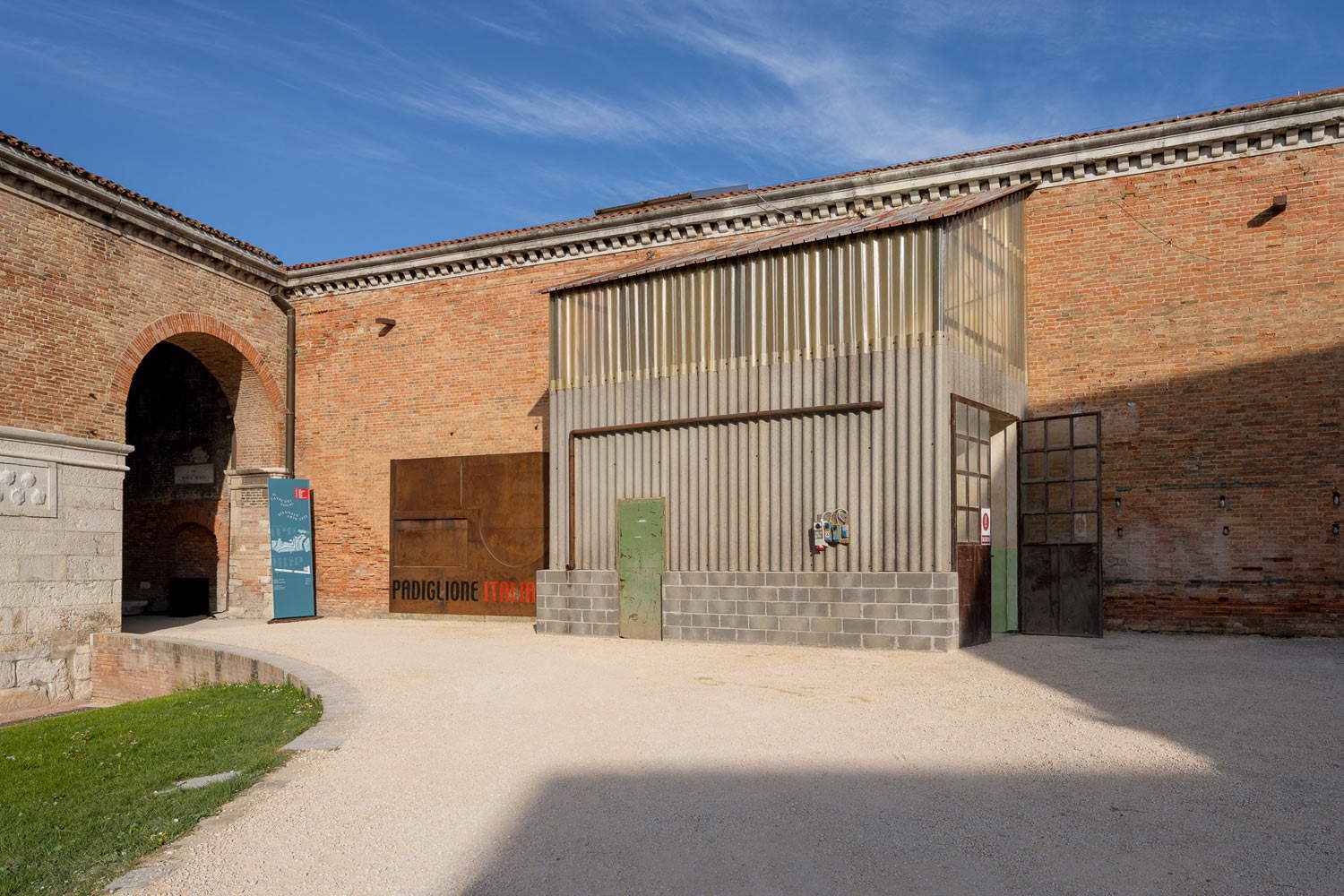
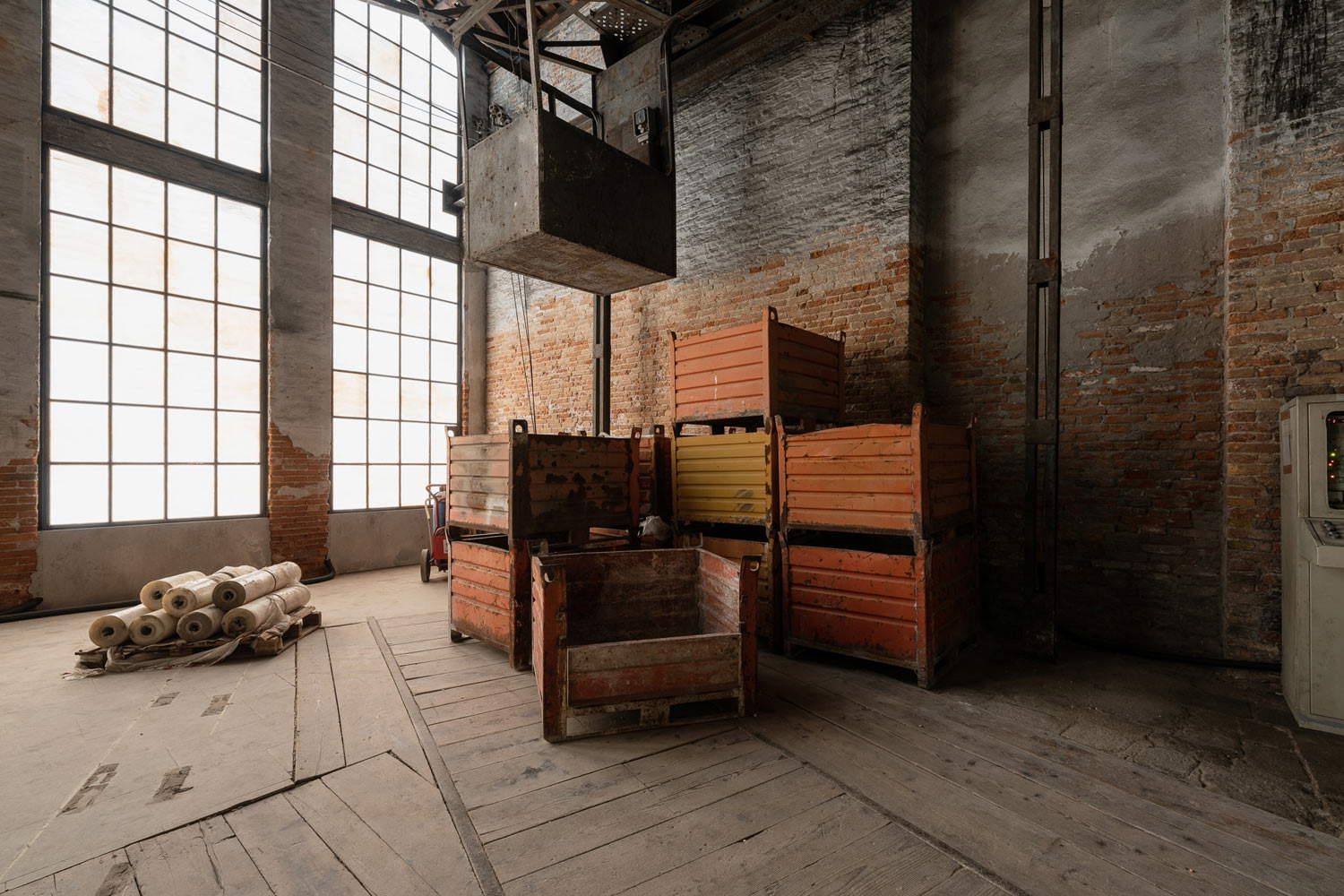
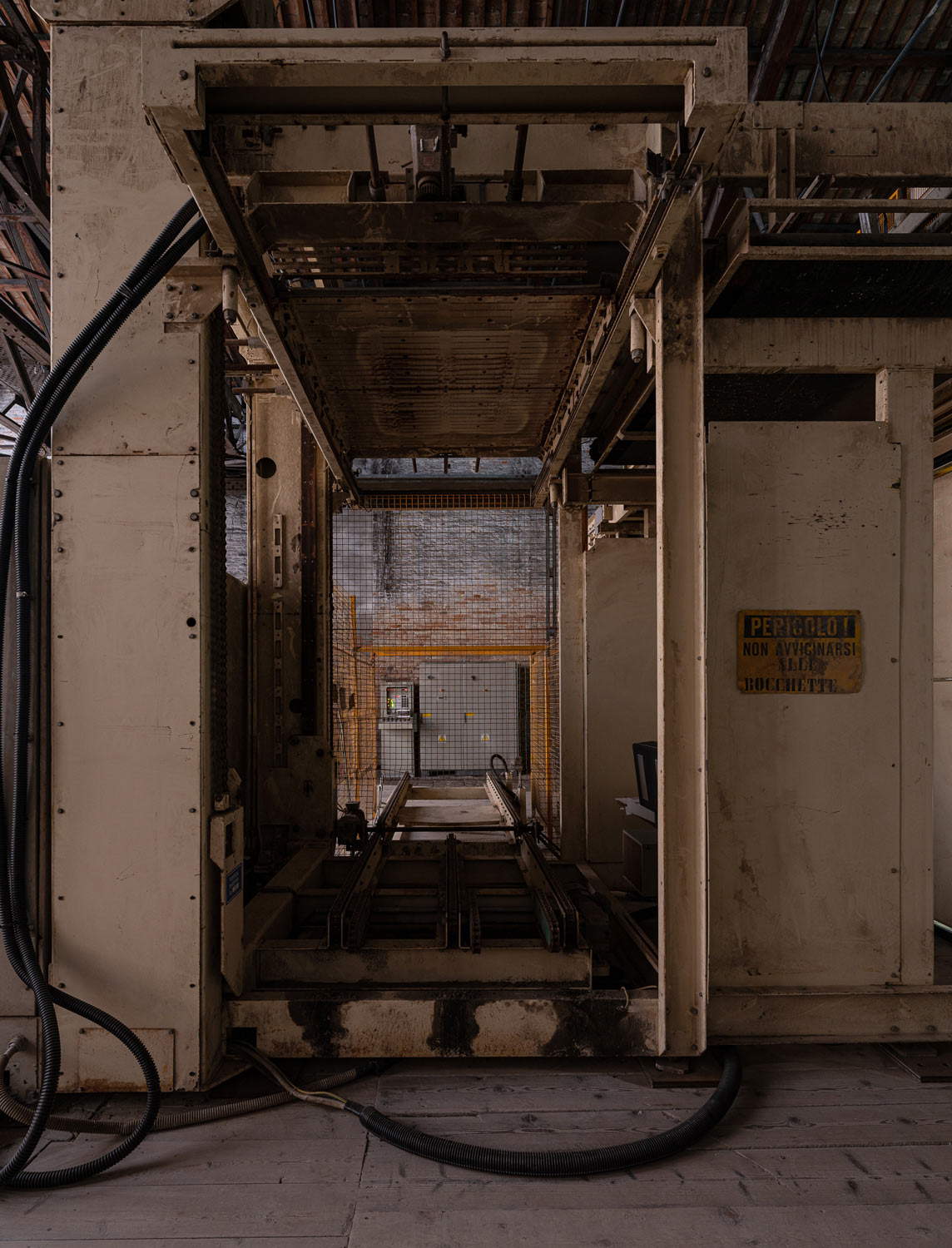
The possibility of experiencing any sensation stops, meanwhile, in front of fiction, so to speak: rather than sublime, one should, if anything, speak of posturing. The painters of the early nineteenth century attempted to express the inexpressible, to convey with images the sense of powerlessness that took hold of their souls, involving even the relative in this descent into the dark depths of their interiority. The industrial expanses of their turn-of-the-century colleagues also conveyed strong contents of social denunciation: one thinks of the terrible, oppressive mining landscapes of a Constantin Meunier, without wishing to list all those Italians who between the late nineteenth and early twentieth centuries translated the conditions of the workers of the time into charged and powerful images. And Andrea Chiesi’s contemporary ruins are visions, almost pervaded by a metaphysical light, rather than documentations. With Tosatti’s Italian Pavilion, on the other hand, we enter the realm of set design, theatrical reconstruction, film sets, and the most blatant simulation. One fails to understand what is the point of such a penetrating mímesis when reality is at hand, when many in Italy have direct experience of factory closures or bankruptcies, when anyone can say they are familiar with the industrial landscape filled with disused factories: Tosatti’s installation may be an exceptional revelation for the glittering world of contemporary art that has often never even seen a factory on a postcard, but for everyone else, the History of the Night is a work that can be admired in any suburb of any Italian city. How then can the Italian Pavilion, at least in the first part, activate a reflection on that “model based exclusively on profit,” quoting Eugenio Viola, which “has produced growth indifferent to the problems of the territory”? Or rather: how does it succeed in activating the visitor more than a reality that tells us every day of workers in increasingly precarious conditions (when not of deaths on the job), of entrepreneurs who operate in increasingly difficult situations, of a world of work that risks being further disfigured by the events that are upsetting the planet? Where does reconstruction end and art begin, where does rhetoric end and poetry begin?
Certainly, Tosatti has warned the audience ex post about the presence of one of the so-called “short circuits,” to use a term dear to the curators, that should open us to other readings: despite the fact that the reconstruction takes us back to 1960s Italy (notes of Gino Paoli’s Senza fine also come out of a little radio of the time: this at least during the time the writer walked through the Pavilion, but I don’t know if the playlist includes other songs), the machinery the audience encounters was at least largely obtained from companies that closed down during the Covid-19 pandemic. In Tosatti’s idea, the gimmick is supposed to communicate the scant progress that the idea of work has made in Italy over the past decades. Evidently, if the machines are new, it escapes the artist’s notice that for a lay audience, the aesthetic appearance of, say, a latest-generation industrial marble lathe is not so different from what the same machinery might have looked like forty years ago, and so it is difficult for those who have never worked in a factory to come to grasp this subtlety, and if, on the other hand, they are vintage, the fact escapes them that in certain industries some machines, if regularly maintained and kept in excellent health, have even very long life cycles, or they can be specially used to make particular products, as Diadora does, which in 2015 refurbished old machines from the 1960s in order to create so-called vintage models with almost artisanal care. It is therefore a “short circuit” that cannot be grasped unless the artist intervenes to explain it, and here is grafted what appears to be a further minus of this Italian Pavilion, namely the fact that it is a huge monolith. The narrative is the one that has been prepared by the artist and curator without any possibility of deviation, of reading on different levels, of interpretation: a single version, the one prepared by Tosatti and Viola and administered by them to the public called to walk through the “complex experiential narrative machine” (or the “device,” another term particularly in vogue among curators à la page, whatever it means) of the Italian Pavilion slavishly following the thread of the narrative that the artist and curator give them without requiring any particular commitment. It is true that the prepackaged hermeneutic is now common to much of contemporary art, but elsewhere one can at least encounter a little poetry.
Tosatti’s staging stands as the latest product of a line that starts with Edward Kienholz’s pioneering installations, runs through Mike Nelson’s working environments, Glen Seator’s precise and lopsided reconstructions, Christoph Büchel’s disheveled interiors and Gregor Schneider’s “dead houses,” and, citing in this case even Kounellis’s sewing machines, arrives at the many immersive installations that rage in exhibition spaces around the world, including the Venice Biennale (it will be worth noting how Nelson and Schneider had already brought a workshop and an abandoned house to the pavilions of their countries, Britain and Germany, in 2011 and 2001, respectively), and thus stands as a purely mannerist work. In the literal sense of the term, thus without implications that have anything to do with the anxieties that ran through the works of sixteenth-century Mannerism: symptomatic is the fact that the most powerful divestment one can speak of is that which Adrian Searle, reviewing the Venice Biennale for the Guardian, made of the Italian Pavilion itself, dismissed in half a line without even mentioning the artist’s name, disarmingly (“it looks like a parody of a Mike Nelson installation,” Searle wrote). If the choice of a single artist for the national pavilion, an unprecedented fact for Italy (and greeted by many in a positive way at the time of the announcement: however, the writer has always considered the choice of a single artist too limiting with regard to the Italian art scene, and the fact that other countries have been choosing a single name for years is not in itself a good reason to imitate them), had to produce this result, perhaps it will be better that from 2024 we return to proposals more in line with the domestic tradition.
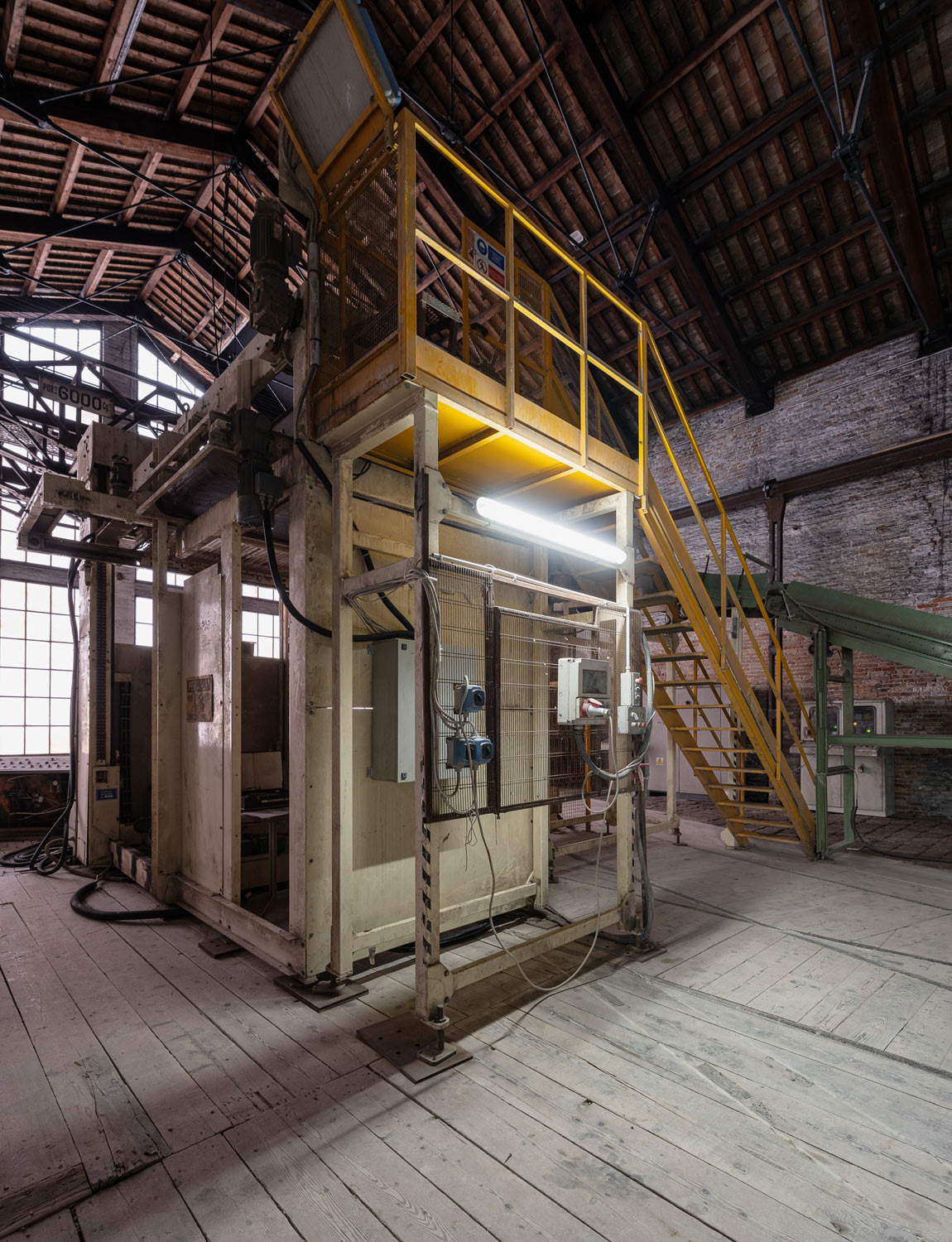
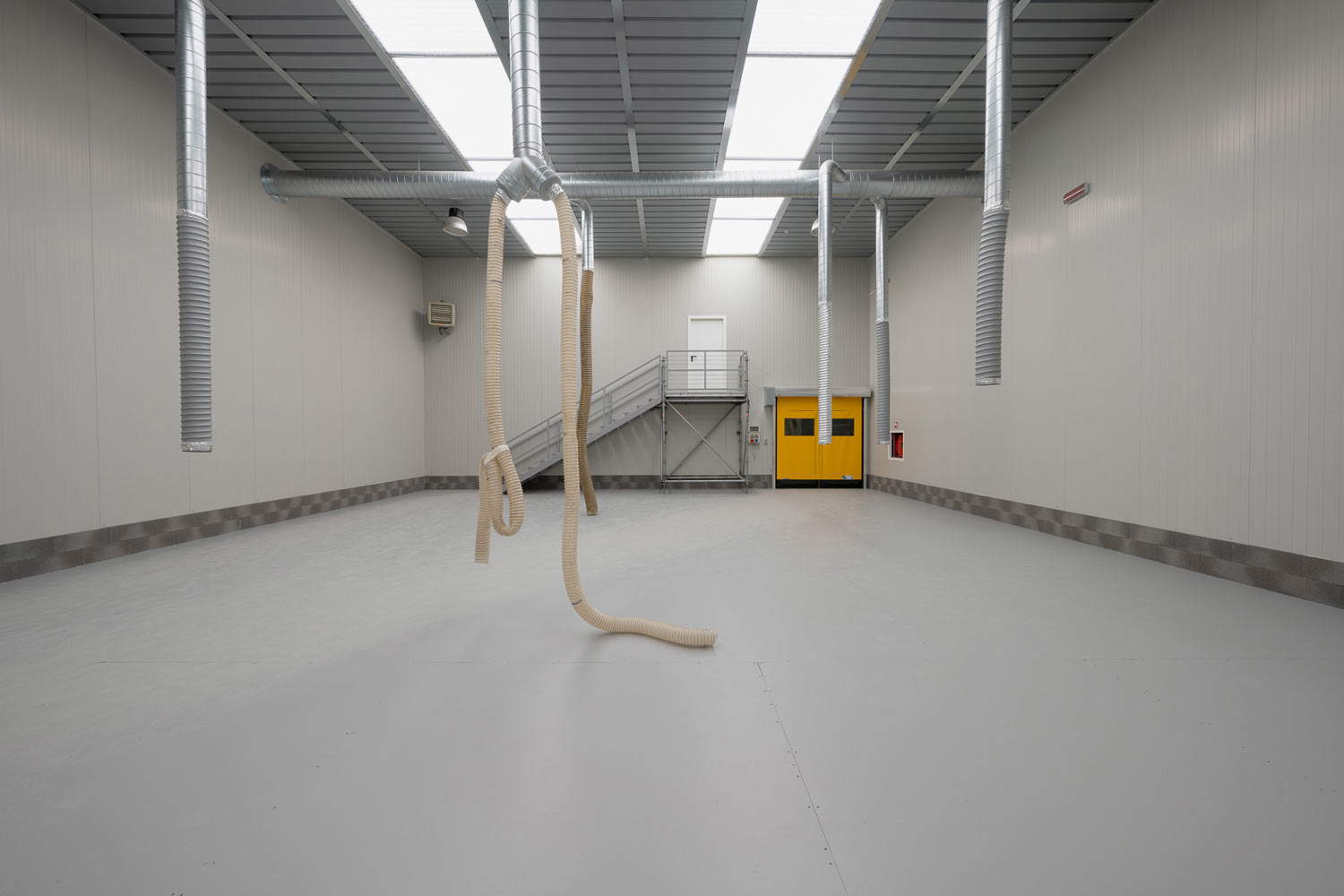

The Italian Pavilion would also like to have a pedagogical purpose: let’s say that so as not to make accusations of moralism, which Tosatti and Viola moreover rejected prematurely, already during the press conference in which the title of the project was announced. The idea is to reflect first of all on the “frustration of a working class that has reached the end of its tether,” which is juggling between “unemployment benefits” and “difficult outplacements,” and then to come to reject a “dramatic position” in order to channel a “proactive and optimistic” one that addresses the need to put environmental issues “at the forefront of the political agenda” and to invest in research and training. But where is the denunciation? And how can we fail to note the contradiction between the “frustrations” of the working class and a pavilion costing two million euros, a third of which was guaranteed by the state and the remainder by sponsors, including Sanlorenzo and Valentino (which even organized a dinner with floral bouquets at the Tese di San Cristoforo, thus close to Tosatti’s mock ruins, with clinking of glasses and parades of elegant ladies and knights in black tie on the sidelines of the project that would like to rise as a symbol of the workers’ drama), and thus between the intent to denounce the catastrophe, the misery, and the gigantism of an ephemeral, huge and expensive merry-go-round financed by luxury brands? “Poverty for the people, for us Valentino” sarcastically sentenced Vittorio Sgarbi in an amusing video posted on his Facebook page.
So if the pars destruens does not hold, one hopes at least for the “final epiphany”: I confess that I was probably the only one who did not catch the reference to Pasolini’s fireflies (and yes, even here, Viola and Tosatti had prepared us in the press conference by punctually enumerating their literary references, including Pasolini’s beetles). It may be that, having always been born and lived by the sea, I have never seen fireflies on the water, and I therefore equivocated them for the comets mentioned in the title of the project, but little does it change: how is the catharsis guaranteed by the fireflies (or comets, for that matter), fake ones, supposed to convince the visitor to “better face the challenges of the future”? Upon exiting the pavilion, the fake fireflies disappear: the problem is that the simulation is so obvious, and the impression of being on the set of a film so disruptive, that the experience that Viola and Tosatti would like to activate, by calling the audience to take a “sensitive journey inside the visual machine,” is unlikely to be fulfilled. Wanting to present an example familiar to anyone who will visit the Italian Pavilion, in the landscape of the young Precious Okoyomon, in which one comes across at the end of the international exhibition, just before arriving at the History of the Night, one encounters real butterflies, an eventuality that makes the boundaries of the visitor’s personal experience more labile and blurred, thus being more capable of spurring the audience’s response. It will therefore be convenient to go, rather, to look for fireflies in a forest or garden. And then, Viola and Tosatti’s narrative is so monolithic and leaves so little room for autonomous reading by the audience that it is difficult to ask questions at the end of a path, moreover, devoid of any historical contextualization, which certainly would have detracted from the character of the installation, given that the intent is to make the audience cross several epochs in a single space, but it would have made the audience’s experience more meaningful. If it is true what Jacques Rancière wrote in his 2008 Le spectateur émancipé, namely, that the spectator’s identity is constructed in the gap between himself and the work of art, and that the true power of the audience lies in the free possibility on the part of each spectator to be able to exercise that “unpredictable game of associations and dissociations” that triggers emancipation, a process that begins when it is understood that the spectator also somehow acts, then it could be said that the design of the Italian Pavilion, by almost completely nullifying the unpredictable, also minimizes the possibilities for the visitor.



And one could certainly do without the literary scaffolding called upon to support the project: Pasolini is brought up in a scholastic, superficial and all too obvious way, and there is no trace whatsoever of the complexity that fills the pages of Rea’s Dismissal, a far more human and intimate story than the one told by Storia della notte e destino delle comete (and, by the way, there is little point in having to go through the experience alone and in silence, if you then find yourself catapulted among rowdy neighbors and fellow travelers in the mood for taking selfies in the squalor Tosatti wants to recreate). This is not the pretentious banality of last year’s Italian Pavilion, but neither was it necessary to evoke cornerstones of the literature of the past fifty years to justify a grand merry-go-round, perfect for the Biennale’s amusement park, which lately has a tendency to reward (whether critics or the public’s preference) immersive installations: think only of the last two Golden Lions, this year’s awarded to Great Britain, which takes us into a kind of recording room, or even worse last year’s for Lithuania’s easygoing beach.
It has been ten years since Nelson pondered how to prevent his I, Impostor from being swallowed up by this playful aspect of the Biennale, by that amusement park effect that invariably accompanies the visit, and thus sought ways to preserve that ambiguity and open possibility of interpretation that should characterize a work of art. With History of the Night and Fate of Comets this barrier seems to have fallen. The best way to visit the Italian Pavilion, then, is to arrive there aware that you are getting on an adult carousel. Like entering a Disneyland themed attraction. You don’t even need to go to the trouble of thinking; they have already thought of that for us, too. The workers, meanwhile, will continue to stay outside.
Warning: the translation into English of the original Italian article was created using automatic tools. We undertake to review all articles, but we do not guarantee the total absence of inaccuracies in the translation due to the program. You can find the original by clicking on the ITA button. If you find any mistake,please contact us.